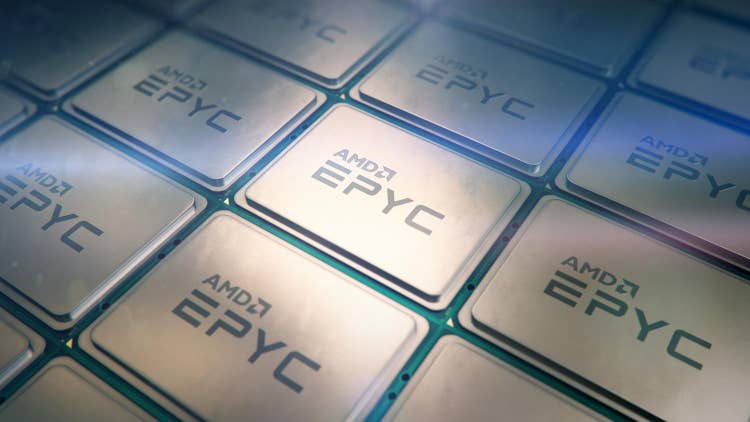AMD EPYC Gains More Ground In Servers Against Intel, Survey Says

A new survey of IT buyers shows that AMD is making headway in the server processor market against rival Intel, especially among large enterprise businesses, and a lot of it comes down to the value proposition offered by AMD's EPYC CPUs.
Released on Monday, the 2019 State of Servers survey by Spiceworks shows that out of more than 500 IT decision makers, 16 percent are using AMD processors for their on-premises server today, and that number is expected to ramp up to 21 percent in the next two years.
[Related: Watch Out, Intel: AMD To Release 7nm Ryzen, EPYC CPUs In Mid-2019]
Intel remains the juggernaut of the server world, however, with 93 percent of businesses using Intel-based servers, but in part because of its market dominance, the company's server share among the 500 companies surveyed is expected to grow significantly slower to 95 percent by 2021.
The market share numbers total to more than 100 percent in the survey because some companies likely use both Intel- and AMD-based servers, according to a Spiceworks spokesperson. The survey does not account for cloud service providers, which are the largest source of growth in the data center market.
The survey underscores the increased competition Intel faces in the server market since AMD re-entered the space in 2017 with the introduction of EPYC. Lisa Su, AMD's CEO, recently said the company achieved its goal of reaching mid-single digit server share by the end of 2018 — a sure sign of progress but also an indication that the new survey only provides a snapshot of IT purchasing decisions.
Kent Tibbils, vice president of marketing at ASI, a Fremont, Calif.-based distributor that mainly sells Intel processors, noted that while AMD has gained traction with EPYC, the survey doesn't indicate how many AMD-based servers businesses are using versus Intel-based servers.
The Spiceworks spokesperson said the survey did not collect that information.
Tibbils said ASI only sells AMD processors through platform solutions provided by companies like Super Micro, and those sales are relatively small compared to Intel.
"We haven't seen a huge transition or loss of share of anything like that from Intel to AMD," he said.
In the Spiceworks survey, IT buyers gave Intel high marks for attributes like ease of management, high performance, relevant products and energy efficiency while Intel and AMD received similar praise for reliability. However, AMD outranked Intel when it came to "value for the money," with 77 percent of IT buyers saying AMD had a good value position while only 42 percent said the same for Intel.
"In talking to people, they definitely talk about the price of the AMD processor and price per core, and there definitely seems to be applications where they use AMD in their servers," Tibbils said, pointing to things like AMD's single-socket processors and increased memory capacity.
The Spiceworks survey said AMD has been making better progress among enterprises than SMBs, with 27 percent of surveyed enterprises using AMD compared to 17 percent of mid-sized businesses and 11 percent of small businesses. On the other hand, 98 percent of enterprises use Intel compared to 93 percent of mid-sized businesses and 92 percent of small businesses.
Bob Venero, CEO of Holbrook, N.Y.-based Future Tech, an Intel partner that works with hundreds of enterprises, said despite the survey's findings, he thinks AMD will have more challenges in the enterprise server market than with SMBs. His customers have largely stuck with Intel.
"You're going to have a hard time ripping Intel out of an enterprise," he said.
However, Venero said, Intel's own problems, such as the CPU shortage has made customers more open to AMD. While Intel's shortage has mostly impacted client processors, Venero said he has seen some impact on server CPUs, except lead times have only been delayed by weeks and not months.
"There's definitely more open-minded thought around AMD with customers," he said.
Ultimately, AMD still has a lot to prove since the company last tried to tackle the server market with its now-defunct Opteron line of processors, according to Venero. He said when some customers migrated to Opteron-based servers for cost savings reasons, things didn't work out because of problems running software. With Intel, he said, "it just works."
Venero said AMD needs to make a "substantial price play" to compete with Intel, but even then, he questioned whether that "risk is going to be worth the cost delta."
"It's a question mark of, 'will the applications run properly on an AMD platform versus an Intel platform," Venero said. "I'm not in a position where I believe the juice is worth the squeeze."